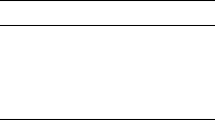Abstract
Optimizing Space-Time (S–T) codes, in terms of minimum error rates, based on Union bounds often produces results which vary with signal-to-noise ratio (SNR) and so are not easy to use. Error-rate evaluation of S–T codes using Union bounds sometimes requires very heavy computational loads and so is impractical. In this paper, a Common function shared by different Union bounds is derived and proposed for optimization of S–T codes. The Common function produces the optimization results which are SNR independent and so requires a substantially lower computation load. Results of Monte-Carlo simulation on two 2 × 2 rotation-based diagonal S–T codes (D codes) and two Linear-Dispersion codes (LDCs) show that the bit-error-rate (BER) performances using the optimization results based on the Common function, the exact Union bound (EUB) and Chernoff Union bound (CUB) are all nearly identical. The Common function is subsequently used to develop a modified Union bound (MUB) and modified Chernoff Union bound (MCUB). Results of numerical calculations show that the MUB can provide a good compromise between the accuracy and computational load for BER evaluation.
Similar content being viewed by others
References
Tarokh V., Seshadri N., Calderbank A.R. (1998). Space–time codes for high data rate wireless communication: Performance criterion and code construction. IEEE Transactions on Information Theory 44, 744–765
Uysal, M, & Georghiades, C. N. (2004). On the error performance analysis of space-time trellis codes. IEEE Transactions on Wireless Communications, 1118–1123.
Taricco G., Biglieri E. (2002). Exact pairwise error probability of space-time codes. IEEE Transactions on Information Theory 48, 510–513
Lu H.-f., Wang Y., Kumar P.V., Chugg K.M. (2000). Remarks on space-time codes including a new lower bound and an improved code. IEEE Transactions on Information Theory 49(10): 2752–2757
Zhang Z., Cheung, S. W., & Yuk, T. I. (2006). Infinite series representation of the exact PEP for space time coding. Global Telecommunications Conference, 2006. IEEE, Nov. 2006, pp. 1–5.
Zhang, Z., Cheung, S. W., Yuk, T. I., & Kuo, H. (2006). Optimization and BER evaluation for space-time codes using union bounds for 2-by-2 MIMO systems. 2006 IEEE Spring Vechicular Technology Conference, May 2006, pp. 1–5.
Simon M.K., Alouini M.S. (2005). Digital communication over fading channels (2nd ed.). New York, Wiley
Benedetto S., Biglieri E. (1999). Principles of digital transmission with wireless applications. New York, Kluwer
Varadarajan, B., & Barry, J. R. (2003). Optimization of full-rate full-diversity linear space-time codes using the union bound”, Information Theory Workshop, 2003. Proceedings, 2003 IEEE, 31 March–4 April 2003, pp. 210–213.
Shi, Q., & Zhang, Q. T. (2004). Simple nonorthogonal 4 x 4 space-time block codes with rate one and full diversity. 2004 IEEE Fall Vechicular Technology Conference, Sept 2004, vol. 4, pp. 2449–2452.
Proakis J.G. (2001). Digital communications (4th ed.). Boston, U.S.A., McGraw-Hill
Yao, H., & Wornell, G. (2003). Achieving the full MIMO diversity-multiplexing frontier with rotation-based space-time codes. In Annual Allerton Conference on Communication, Control and Computing, Monticello IL, Oct 2003.
Hassibi, B., & Hochwald, B. (2000). High-rate codes that are linear in space and time. In Annual Allerton Conference on Communication, Control and Computing, Oct 2000, pp. 1047–1056.
Heath R.W., Paulraj A.J. (2002). Linear dispersion codes for MIMO systems based on frame theory. IEEE Transactions on Signal Processing 50(10): 2429–2441
Byun, M.-K., & Lee, B. G. (2002). New bounds of pairwise error probability for space-time codes in Rayleigh fading channels. 2002 IEEE Wireless Communications and Networking Conference, March 2002, vol. 1, pp. 89–93.
Author information
Authors and Affiliations
Corresponding author
Rights and permissions
About this article
Cite this article
Zhang, Z., Dai, X.G., Cheung, S.W. et al. A Common Function of Different Union Bounds for Optimization and BER Evaluation of Space–Time codes. Wireless Pers Commun 46, 493–506 (2008). https://doi.org/10.1007/s11277-008-9449-6
Received:
Accepted:
Published:
Issue Date:
DOI: https://doi.org/10.1007/s11277-008-9449-6



